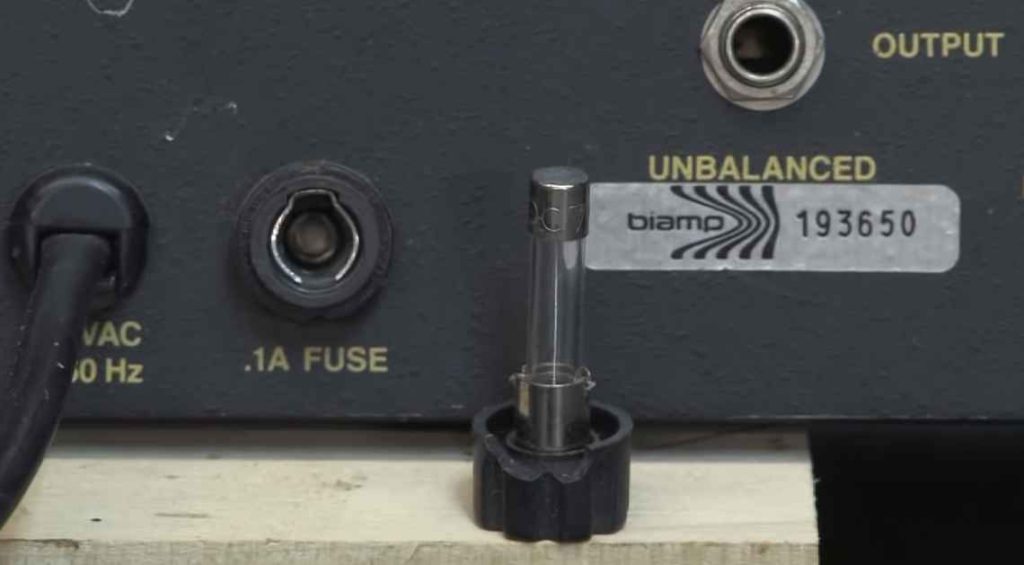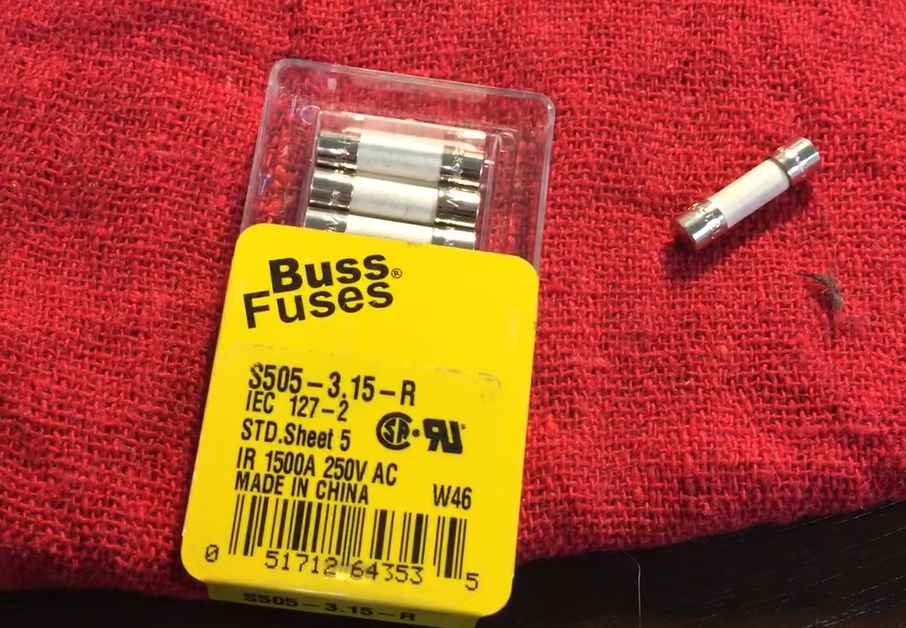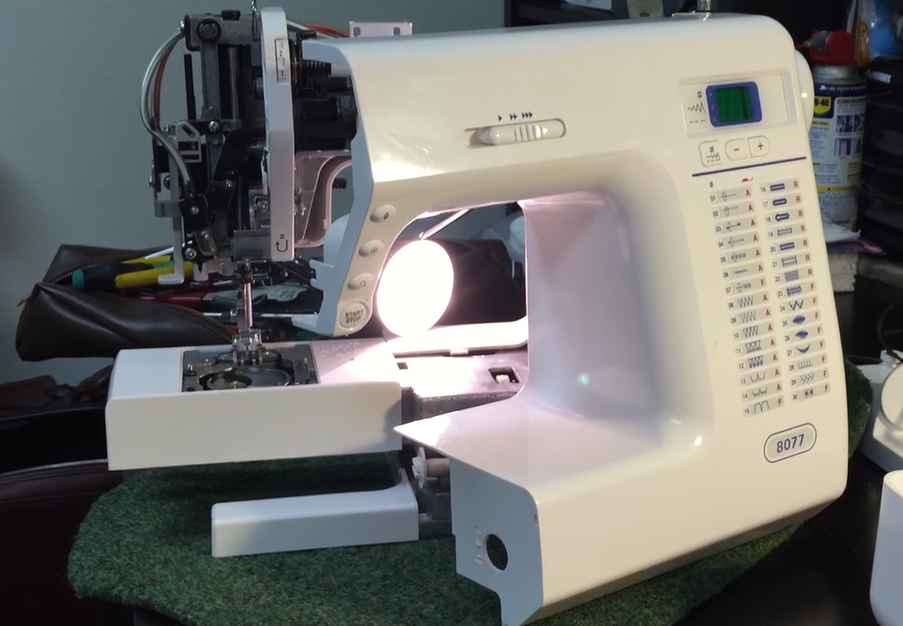Do Sewing Machines Have Fuses? Answered (2023)

If you’re a sewing machine enthusiast, you might have wondered whether your machine has a fuse. Sewing machines are complex devices with various electrical components, so it is essential to know if they have a fuse and where to locate it.
This blog post will explore whether sewing machines have fuses, why they are important, and what to do if your machine blows a fuse.
By the end of this post, you’ll better understand how your sewing machine works and how to maintain it properly. So, let’s get started!
Do Sewing Machines Have Fuses?
Yes, Most sewing machines have fuses to protect against overloading. The fuse is usually located near the power cord and may be hidden behind a small door.
If your sewing machine has stopped working and you suspect a blown fuse, check the owner’s manual for the location of the fuse and how to replace it.
Why Does a Sewing Machine Have Fuses?
The answer is quite simple. Sewing machines have a lot of moving parts, and they generate a lot of heat. The fuse is there to protect the machine from overheating and catching fire.
If the sewing machine is overloaded or has a problem with the electrical circuit, the fuse will blow and cut off the power to the machine.

This will prevent the machine from overheating and catching fire.
Sewing machines are not the only devices that have fuses. Many other appliances, such as microwaves and toasters, also have fuses. So, if you ever wonder why your sewing machine has a fuse, now you know!
What are the benefits of having a fuse in a sewing machine?
As with any machine, a sewing machine has many potential safety hazards. The fuse on your sewing machine helps protect you from injury.
Here are some benefits of having a fuse in a sewing machine:
1. A fuse can help prevent fires.
If an electrical short is in your sewing machine, the fuse will blow and cut off the power before the electrical current can start a fire.
2. A fuse can help prevent shock.
If there is an electrical problem in your sewing machine, the fuse will blow and cut off power to the machine before you have a chance to get shocked.
3. A fuse can help prevent damage to your sewing machine.
If your sewing machine has an electrical problem, the fuse will blow and cut off the power before the electrical current can damage the machine.
4. A fuse can help prevent you from sewing with a defective machine.
If there is an electrical problem in your sewing machine, the fuse will blow and cut off power to the machine.
This can help prevent you from sewing with a machine with an electrical defect, which could be dangerous.

5. A fuse can help you find an electrical problem in your sewing machine.
If the fuse blows, it can indicate an electrical problem in your sewing machine. This can help you find and fix the problem before it becomes more serious.
What are the consequences of not having a fuse in a sewing machine?
Fuses help to protect your machine from electrical surges that can damage the internal components. The consequences can be costly if your sewing machine does not have a fuse.
Without a fuse, your sewing machine is susceptible to electrical surges that can damage the internal components.
This can lead to costly repairs or even the replacement of your machine. Additionally, without a fuse, your sewing machine is also at risk of starting a fire. Fuses help to prevent this by breaking the circuit if there is an electrical surge.
While it is possible to operate a sewing machine without a fuse, it is not advisable. Fuses are inexpensive and easy to replace, so there is no reason not to have one in your machine.
If your sewing machine has no fuse, replace it immediately to avoid costly consequences.
How can I tell if my sewing machine has blown a fuse?
If your sewing machine suddenly stops working, it may be due to a blown a fuse. But how can you tell if this is the case? Here are a few things to look for:
1. Check the power cord. If the cord is frayed or damaged in any way, it may cause a problem.
2. Check the sewing machine’s manual. Some models have a fuse located inside the machine. You’ll need to open the machine to check for this.
3. Check the circuit breaker to see if the machine is plugged into an outlet. If the breaker has tripped, it may cause a problem.

4. Check the sewing machine’s needles. If they are bent or broken, they may be the cause of the problem.
5. Finally, check the sewing machine’s bobbin. If it is jammed or not winding properly, it may cause a problem.
If you’ve checked all of these things and still can’t figure out the cause of the problem, it’s best to take the machine to a sewing machine repair shop. They will be able to diagnose the problem and fix it for you.
How do I replace a blown fuse in my sewing machine?
Most sewing machines have a built-in fuse that protects the machine from electrical surges. Your sewing machine may not work due to a blown a fuse; it is relatively easy to check and replace.
First, unplug the sewing machine from the power outlet. Then, locate the fuse holder on the back or side of the machine. The fuse holder will usually have a clear cover so that you can see the fuse.
If the fuse looks black or damaged, it is probably blown and needs to be replaced. Unscrew the holder and remove the old fuse to replace the fuse.
Then, insert a new fuse of the same amperage and screw the holder back.
Once the new fuse is in place, plug the sewing machine back in and turn it on. If it still does not work, you may have a more serious problem and must take the machine to a repair shop.
How can I prevent blown fuses in my sewing machine?
If your sewing machine has blown a fuse, it is likely because you have overloaded it by sewing too much in one go or using too much pressure. To prevent this from happening, you can take some simple precautions.
First, use the correct fuse size for your sewing machine. If you need more clarification:
- Consult the manual or ask a professional.
- Sew for up to 30 minutes at a time.
- If you need to sew longer, take a break in between to allow the machine to cool down.
- Only sew over thick seams or multiple layers of fabric at a time.
Sewing over thick seams can overheat the machine and cause the fuse to blow.
If you take these precautions, you should be able to prevent blown fuses in your sewing machine.
Conclusion:
In conclusion, sewing machines have fuses that protect the machine’s electrical system. Fuses act as a safety net that prevents damage to the machine in the event of a power surge or overload.
If your machine blows a fuse, don’t panic. Locate the fuse and replace it with the correct type to get your machine up and running again.
Maintaining your sewing machine properly is essential to prevent issues like blown fuses from occurring in the first place.
Regular cleaning and maintenance can extend the life of your machine and keep it running smoothly.
We hope this post has answered your question about sewing machine fuses and provided you with helpful tips for maintaining your machine.
Thank you for reading!



